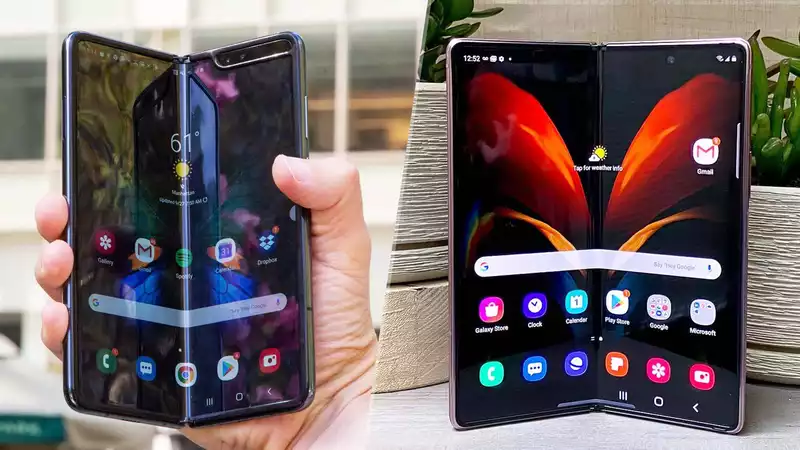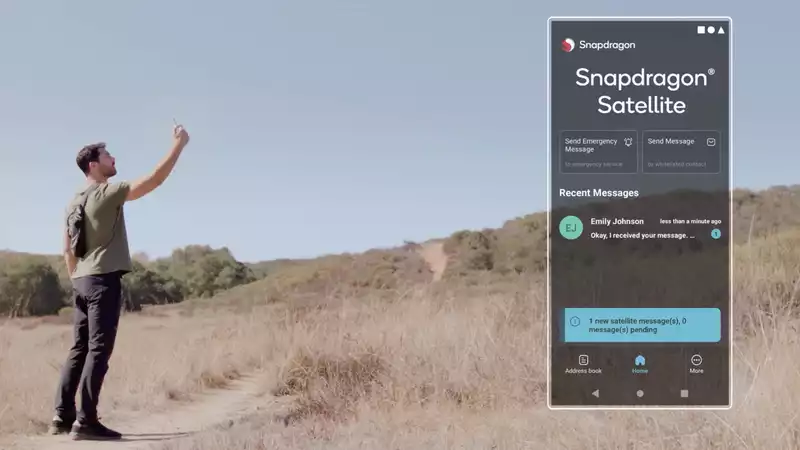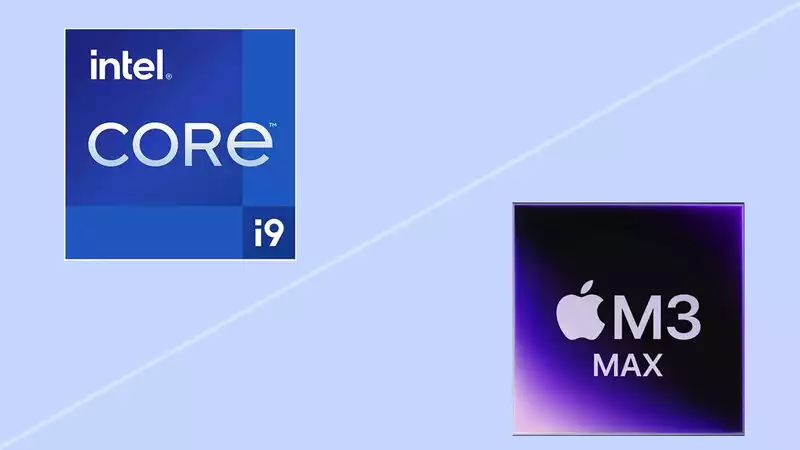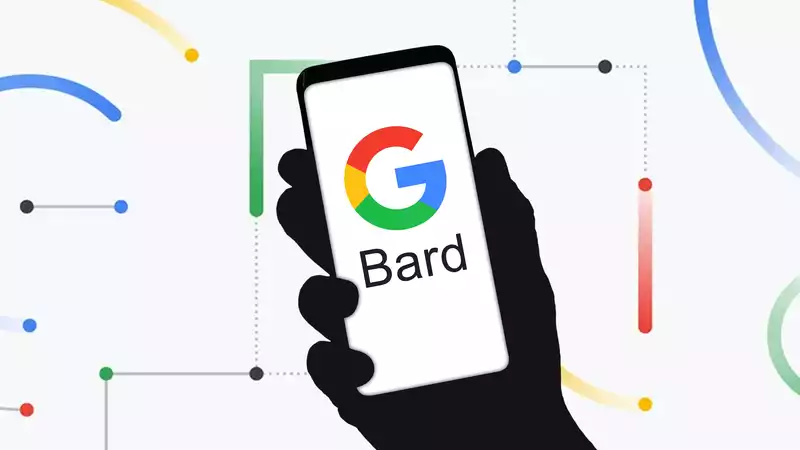Samsung has announced another big foldable. The new $1,999 Galaxy Z Fold 2 replaces the $1,980 original Galaxy Fold and features many notable improvements, from a significantly larger external display to a more durable hinge, 5G, and a more powerful chipset.
The Galaxy Z Fold 2 is also more multifunctional than its predecessor, thanks to a new flex mode and improved multitasking that allows three apps to run simultaneously on the screen. From specs and design to features and software, a comparison of the Galaxy Z Fold 2 and Galaxy Fold reveals all the biggest differences between these two expensive futuristic devices.
Both the Galaxy Z Fold 2 and Galaxy Fold feature a pair of displays, one inside and one outside, but the new device's screen is superior in every way.
The original Fold had a small 4.6-inch AMOLED panel on the outside and a 7.3-inch AMOLED panel protected by a plastic substrate on the inside. In the new model, the outer panel was replaced with a new 6.2" display, raising the size of the primary screen to 7.6".
The 7.6" panel inherited the dynamic LTPO technology introduced in the Galaxy Note 20 Ultra and improved the refresh rate to 120 Hz.
The ultra-thin glass improves the durability of the Z Fold 2's large screen and will undoubtedly look better than the original Galaxy Fold, which suffered from strange dents and orange peel effects under certain light conditions. the Z Fold 2's hinge has been improved with Samsung's new Sweeper System, which makes it more robust. This sweeper system uses bristles to effectively move dust and debris to the back of the screen. This was a problem for some of the early Galaxy Fold reviewers, so we are glad to see it has now been resolved.
The Galaxy Z Fold 2 is slightly shorter and wider than its predecessor and weighs 9.9 ounces, a half ounce heavier than the original model. A new cam mechanism allows the Z Fold 2's screen to remain partially folded in several positions between closed and fully open, and the gap between the two halves is slimmer when the device is closed. The first Galaxy Fold could not be kept partially open; it either opened completely or not at all.
The Galaxy Z Fold 2 comes in two colors: mystic bronze and mystic black. The original Galaxy Fold was available in Space Silver, Cosmos Black, Mars Green, and Astro Blue.
The triple-lens rear camera system is found on both the Galaxy Z Fold and Galaxy Fold, and a closer look at the spec sheet would not appear to have changed much. Both models have a 12-megapixel primary lens and a telephoto lens with 2x optical zoom, but there are some differences in the aperture, as Samsung has abandoned the old variable aperture system in the latest model. Meanwhile, the old 16-megapixel ultra-wide shooter has been eliminated in favor of a 12-megapixel unit.
As for the front-facing camera, the Galaxy Z Fold 2 has two 10MP lenses, one on the exterior and one on the interior display. The original Fold had an 8MP depth sensor on the front, but the new model does not. Nevertheless, the Z Fold 2 is capable of taking live focus selfies without the help of an additional sensor.
Samsung's mobile imaging hardware is getting very good, and the Note 20 Ultra has a phenomenal camera set with a 108MP main sensor and 5x optical zoom. So no matter how similar the hardware may look on the outside, the new Fold's camera is expected to be even better than its successor.
Additionally, the Galaxy Z Fold 2 has some new camera tricks. Auto framing brings the subject into the frame when shooting video. This is useful when the Z Fold 2 is in flex mode, like a laptop. You can also use the rear camera for selfies and use the front camera as a viewfinder. Or, you can let the subject see you through the cover display while you are shooting, so no one will (maybe) ask you to reshoot.
Like the Galaxy Note 20 series, the Galaxy Z Fold 2 uses Qualcomm's latest and greatest Snapdragon 865 Plus processor and has 12GB of RAM The Z Fold 2 has only 256GB of non-expandable on-board storage and and no 512GB option this time around.
The original Galaxy Fold, released last year, featured a Snapdragon 855 chipset and 12GB of RAM. However, 512GB of storage came standard, one of the only clear advantages the first model had over later models.
The 865 Plus is a marked improvement over the 855. Consider that in a system-wide multi-core Geekbench 5 test conducted last year, the new Galaxy Z Fold 2 scored 3,193 points while the Galaxy Fold scored 2,619 points. The new Fold seems to be better at both multitasking and background processes.
Samsung introduced many useful user interface features and tweaks with the original Galaxy Fold and Galaxy Z Flip, but the Galaxy Z Fold 2 adds tweaks and improvements, combined with a new cam hinge on the Z Fold 2, device can be deployed at several angles and remain intact. In this orientation, the top and bottom of the display show different content and extend the controls of certain apps; Google Duo is one such app, as is YouTube and most of Samsung's first-party software, including Gallery and Camera . Samsung says it is working with third-party developers to help create even more apps optimized for Flex Mode.
App Continuity also allows users to simply open the device for a closer look at the content displayed on the external screen. For example, if you are watching a YouTube video with the phone folded, opening it will instantly resume the video on the inner screen where it was interrupted.
Samsung has also improved the Galaxy Z Fold 2's multi-active window feature, allowing three apps to be launched simultaneously. Images and text can also be dragged between windows, which should excite those who purchase the Z Fold 2 for its productivity possibilities.
While Samsung may bring new software enhancements to the original Galaxy Fold, the device cannot physically support Flex Mode because there is no cam mechanism that can stop the Z Fold 2's hinge in place. This is definitely not attractive to power users and is another reason to purchase the new model.
The Galaxy Z Fold 2 has a 4,500mAh battery, a slight step up from the 4,380mAh power pack found in the original Fold. The new phone comes with a 25-watt charging adapter, again supporting wireless charging and reverse PowerShare charging of accessories.
Samsung's first foray into foldable phones was ambitious but clearly had teething problems; the Galaxy Z Fold 2 addresses almost all of the shortcomings someone might have had with the previous model (except, of course, the high price tag).
We are in the process of testing and reviewing the Galaxy Z Fold 2, so we cannot yet recommend this device. But if you've been waiting for a second-generation foldable device that smoothes out the kinks of earlier attempts, the Galaxy Z Fold 2 is looking more and more likely to be just such a device and a much smarter buy than its predecessor. And for $2,000, it would be a better choice.
.









Comments